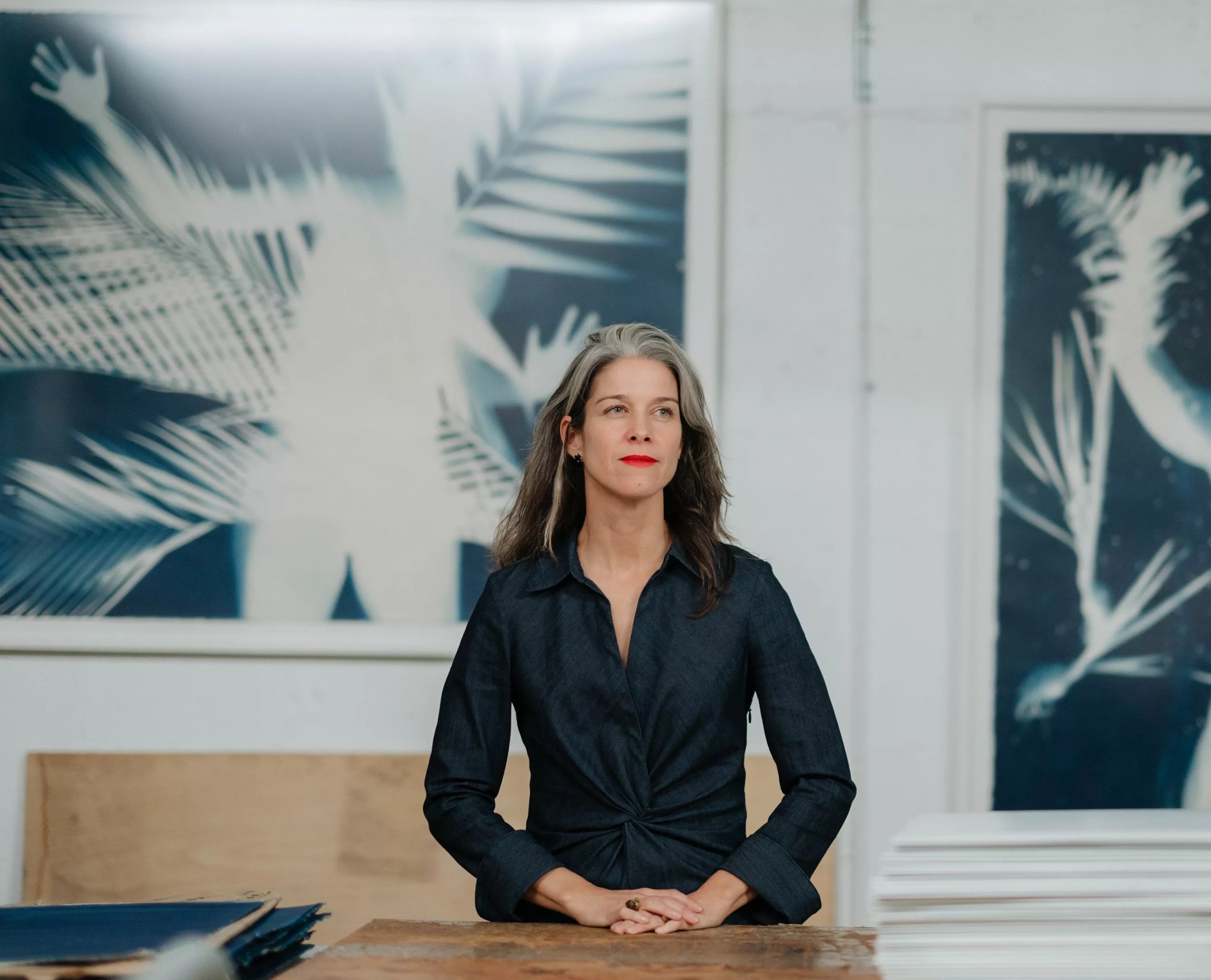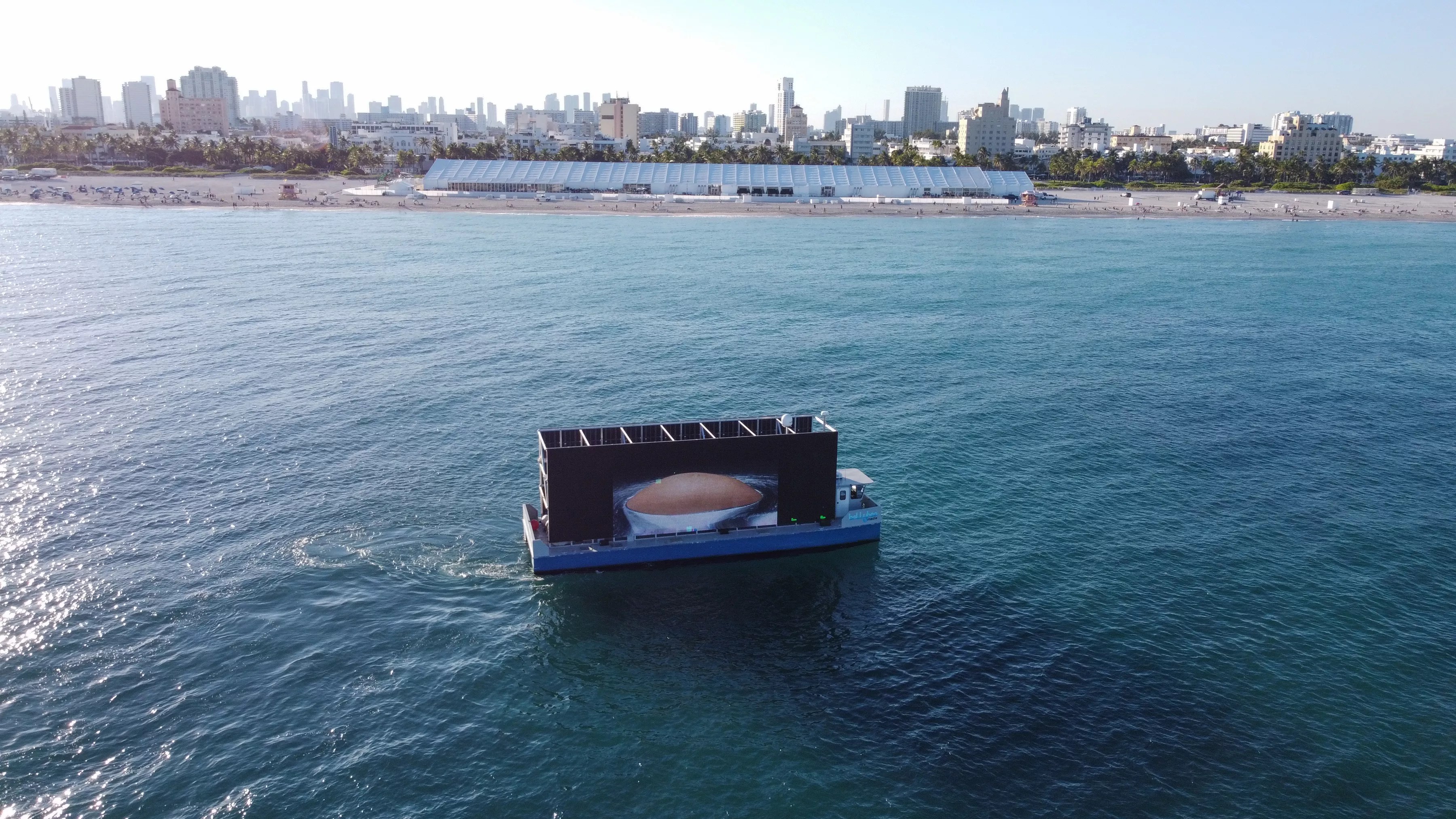
Photo by Chantal Lawrie

Audio By Carbonatix
Tucked underneath the overpass and adjacent to the Miami River is artist Antonia Wright‘s studio. She shares the space with longtime collaborator Ruben Millares; its exposed concrete floors and tall ceilings housing treasures upon treasures of art, both past and future.
The multidisciplinary Miami artist works with everything from photography to sculptures to print to performance, and now, technology. “In the last few years, my practice has gotten very involved in art and tech, and I’ve just been learning how to keep doing it,” she tells New Times.
The John S. and James L. Knight Foundation and United States Artists have taken notice of those efforts. The organizations recently announced Wright as a recipient of the Knight Arts + Tech fellowship, which awards $50,000 to five artists who experiment and create with technology and new media. Wright is the only Miami-based artist on this year’s list of recipients.
Although she won a grant for her work with technology, the Cuban-American’s first love is poetry. She holds a master’s degree in the field and makes sure to write something – anything – every day. Much of her art process also involves pen and paper. When she has an idea for a piece, she works through the puzzle in her mind by writing through it.
Miami, make your New Year’s Resolution Count!
We’re $16,000 away from our End-of-Year campaign goal, with just a five days left! We’re ready to deliver — but we need the resources to do it right. If Miami New Times matters to you, please contribute today to help us expand our current events coverage when it’s needed most.
“Everything starts with an idea,” says Wright, crossing her legs and sitting upright at her desk. “And then I just figure out how to make it. I learn what I need to learn, and I collaborate with people who have the skills that I need…It’s eerie how much the work turns out exactly like I imagine it,” she adds with a smile, her green eyes ablaze with excitement.
Wright creates work that not only excites the eyes and the senses, but entices the mind. She reflects on the times and uses her art as a way to hold a mirror up to society. Her art is powerful and oftentimes political in nature.

“And so with ends comes beginnings” by Antonia Wright, 2021. HD video playing on a digital boat. Installed outside of Untitled Art Fair in Miami.
Photo by Casey Kelbaugh
In 2022, when the Supreme Court overturned Roe v. Wade, Wright was sitting on the board of Planned Parenthood. A women’s rights activist, she felt the sting and foresaw the repercussions of that decision.
“Making abortion illegal?” she asks rhetorically. “We all know it doesn’t make it go away, it just makes it harder for people to access, and then they just have to travel out of state.”
She set out to delve deeper and discover just how far people would need to go to get a safe abortion. She looked into the distances between states with abortion bans and those that allowed the medical procedure, and compiled mileage from a pre-Roe v. Wade world to a post-Roe v. Wade reality. Astounded by the numbers, Wright taught herself how to write code and wrote a unique algorithm to show this increase in mileage.
Whereas artists often use visuals to represent data, Wright wanted to share this data audibly. She connected with a midwife to record the sounds of people giving birth. The midwife would record live births – every guttural scream – and then send the audio files to Wright. “It was like sonifying the data,” she says, glancing over to a pile of notebooks where a small, silver Planned Parenthood badge with her name sits collecting dust.
“The pain in the voice…it’s 100 different people going through childbirth, and it’s very vulnerable, very powerful, very beautiful,” she says.
She exhibited the piece, titled State of Labor, at Spinello Projects in 2022 before the Perez Art Museum Miami purchased it and later displayed it in 2024. It was one of three tech-related works Wright used for her Knight Foundation grant application. Another was a large cement truck that she turned into a musical instrument.

“State of Labor” by Antonia Wright, 2024. Multichannel immersive sound installation, generative. Installation image from Pérez Art Museum Miami.
Photo by Lazaro Llanes, courtesy Pérez Art Museum Miami.
“Then I did another work where I was working with laser lights and coding and programming them with audio,” she adds casually.
The artist is already working on her next body of work, which will be shown at La Cometa Gallery in Allapattah in September.
“As a poet, I’m always thinking, what is the symbol of our time right now?” In creating her new piece, her mind went to immigration.
In one corner of her studio sits a large rusty old raft that washed ashore in Key Biscayne. It was crafted together by old honey barrels and once transported a set of refugees fleeing a communist island. This vessel is being turned into a work of art, in collaboration with Millares.
“We’re writing an audio score for it, and then it’s going to be synced to lights,” says Wright as she runs her finger over an oxidized bullet hole on the boat.
“This boat is obviously about Miami and Cuba and that whole relationship,” says Wright, standing by the massive piece. “But it’s also about the millions of people who are either forced into exile or involuntarily leave their homes…how horrifying it must be to leave your country by water and arrive at a place that you don’t even know.”